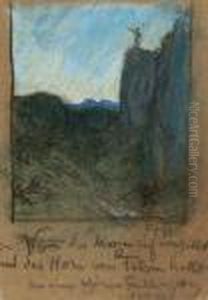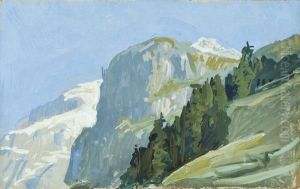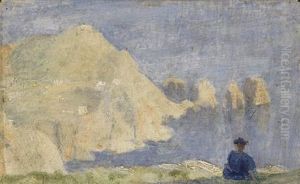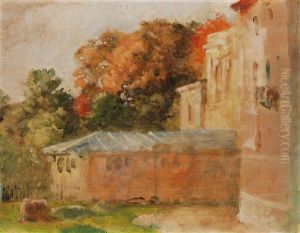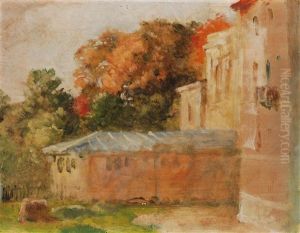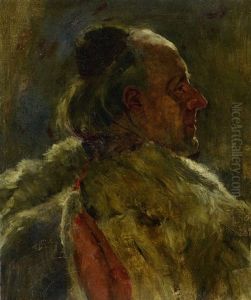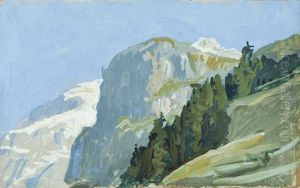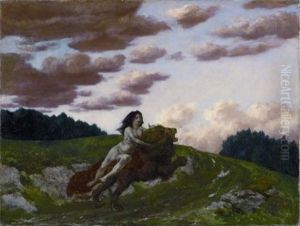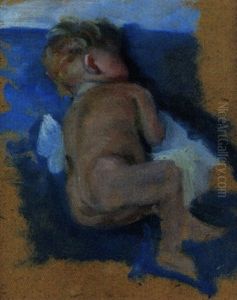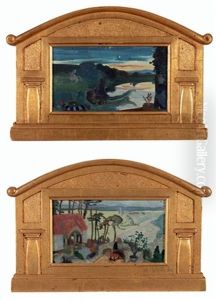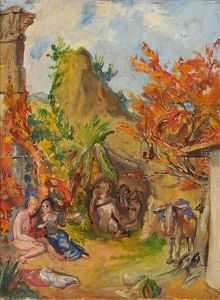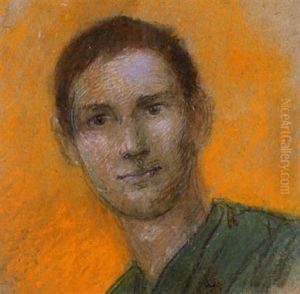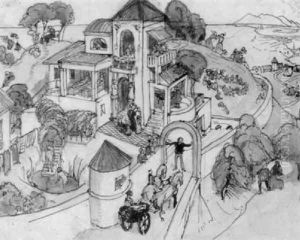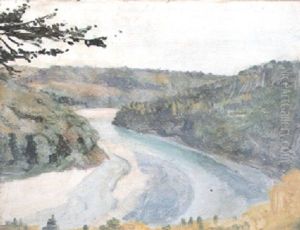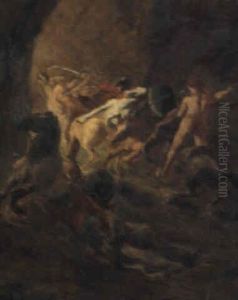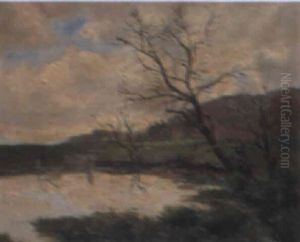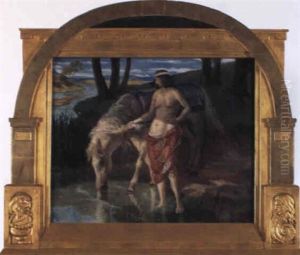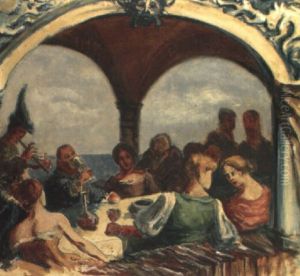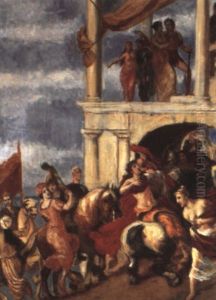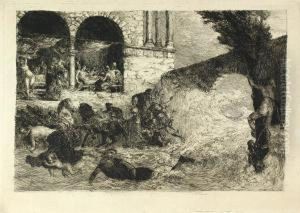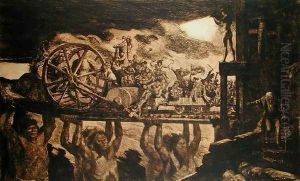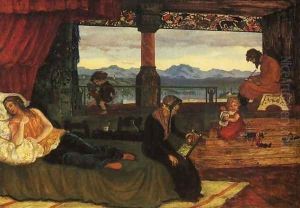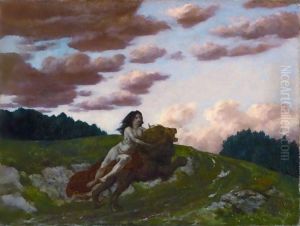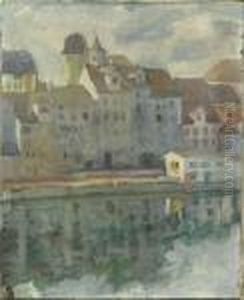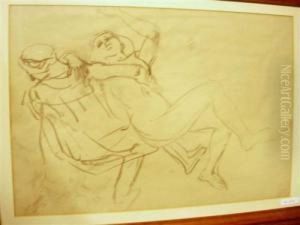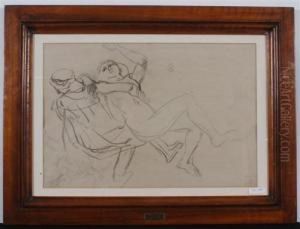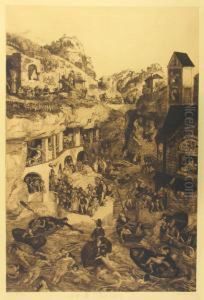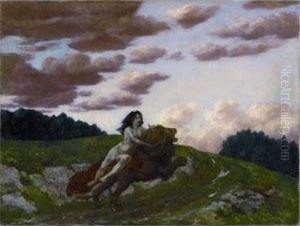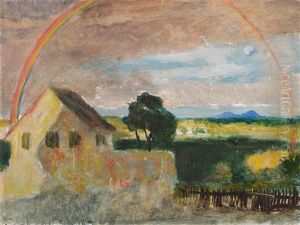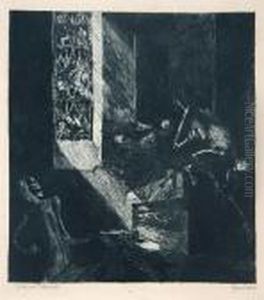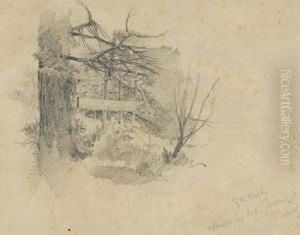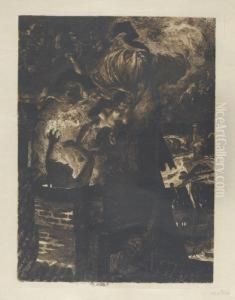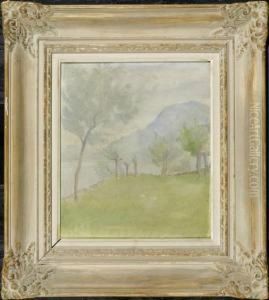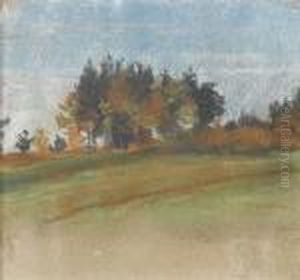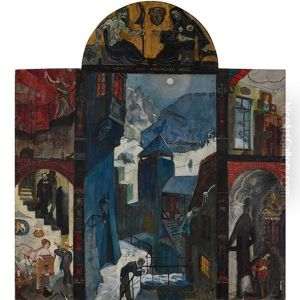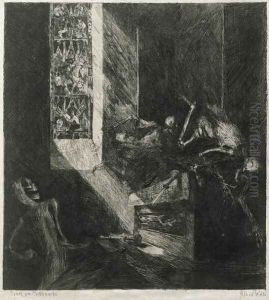Albert Welti Paintings
Albert Welti was a Swiss painter and etcher whose work gained significant recognition in the late 19th and early 20th centuries. Born on April 27, 1862, in Zurich, Switzerland, Welti was raised in a family that appreciated the arts, which helped foster his early interest in art. He initially trained as a businessman but soon followed his passion for art, studying first at the Academy of Fine Arts in Munich and later in Paris.
Welti's artistic style was influenced by Symbolism, and he is often associated with the Swiss Symbolist movement. His work is characterized by a fascination with mythological and allegorical subjects, as well as a distinct mood of melancholy and introspection. In his paintings and etchings, he often explored themes such as life and death, love, and the passage of time, employing a subdued color palette and a focus on detailed, fine work.
One of Welti's most important contributions to Swiss art was his collaboration with Swiss poet Carl Spitteler on illustrations for Spitteler's epic poem 'Olympian Spring'. This project, which involved a series of etchings, brought Welti considerable fame and is considered one of his masterpieces.
Aside from his work in painting and etching, Welti also created large-scale murals, including those for the Swiss National Museum in Zurich. These murals reflect his interest in Swiss history and folklore and are celebrated for their intricate design and storytelling qualities.
Welti's influence extends beyond his own creations, as he was also a mentor to younger Swiss artists. His home in Bern became a gathering place for artists and intellectuals, where he fostered a creative community that would impact Swiss culture.
Albert Welti died on February 7, 1912, at the age of 49. Despite his relatively short life, Welti left a lasting legacy in Swiss art, and his works continue to be studied and admired for their technical skill and emotional depth. He is remembered as one of Switzerland's most important Symbolist artists, and his contributions have had a lasting impact on the country's cultural heritage.
